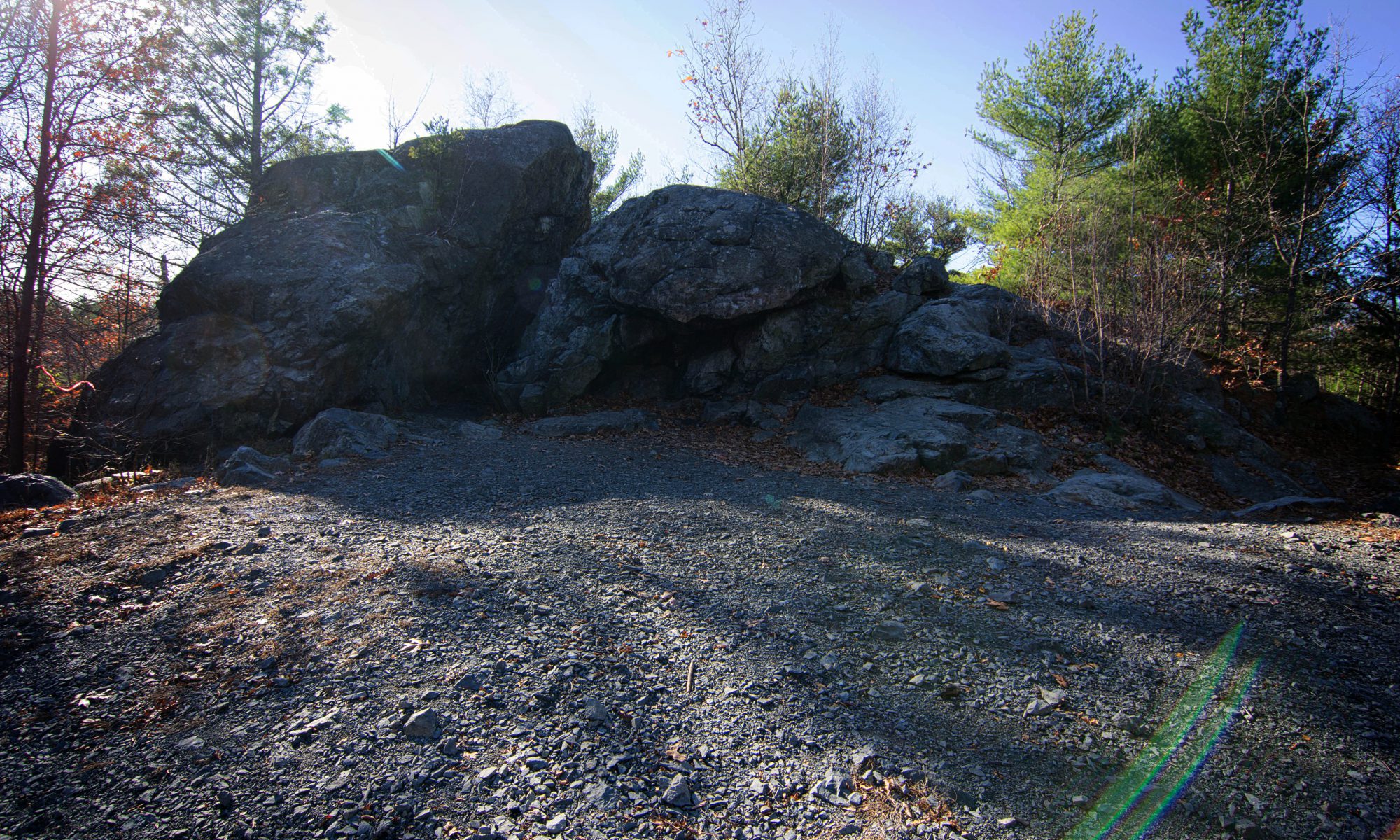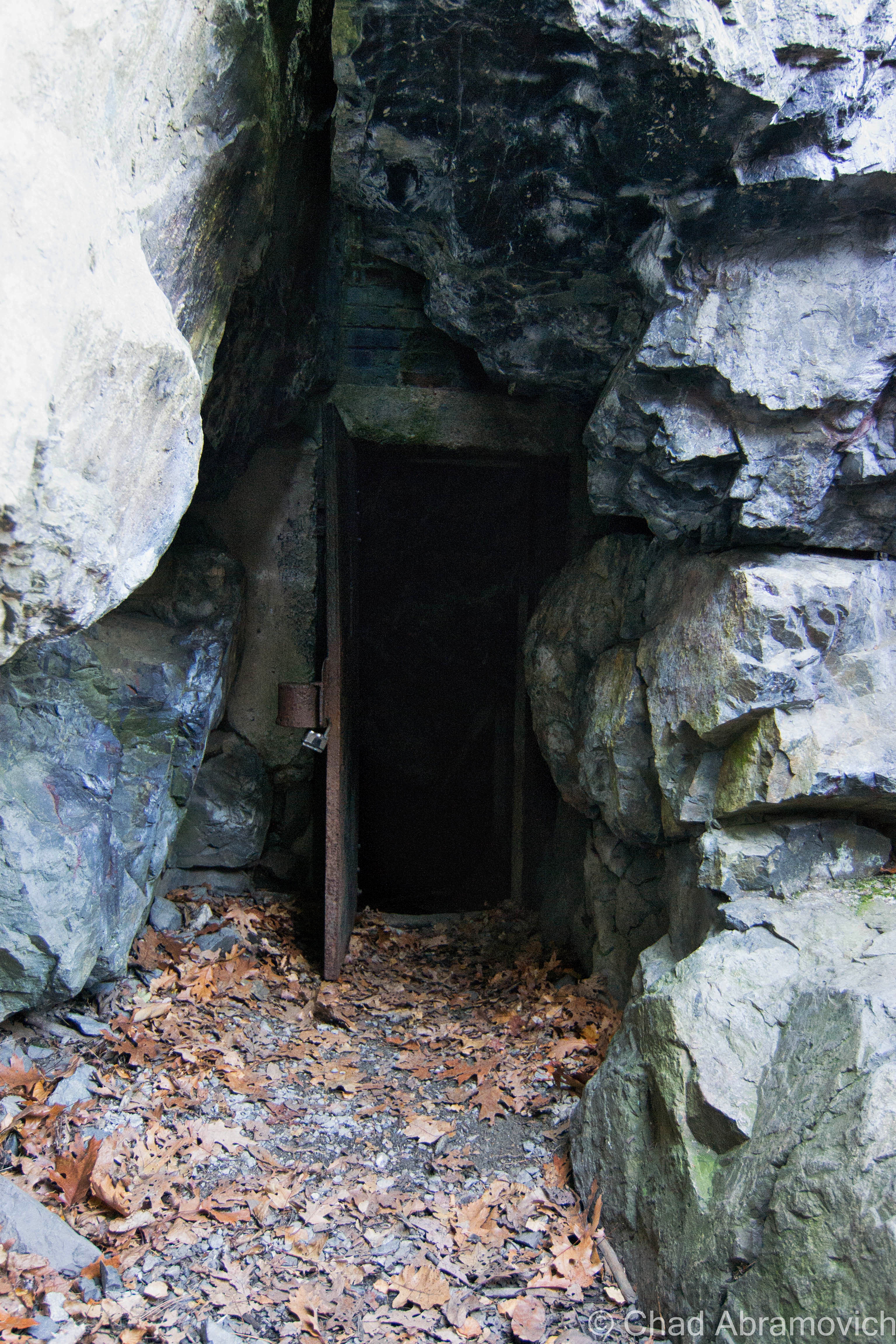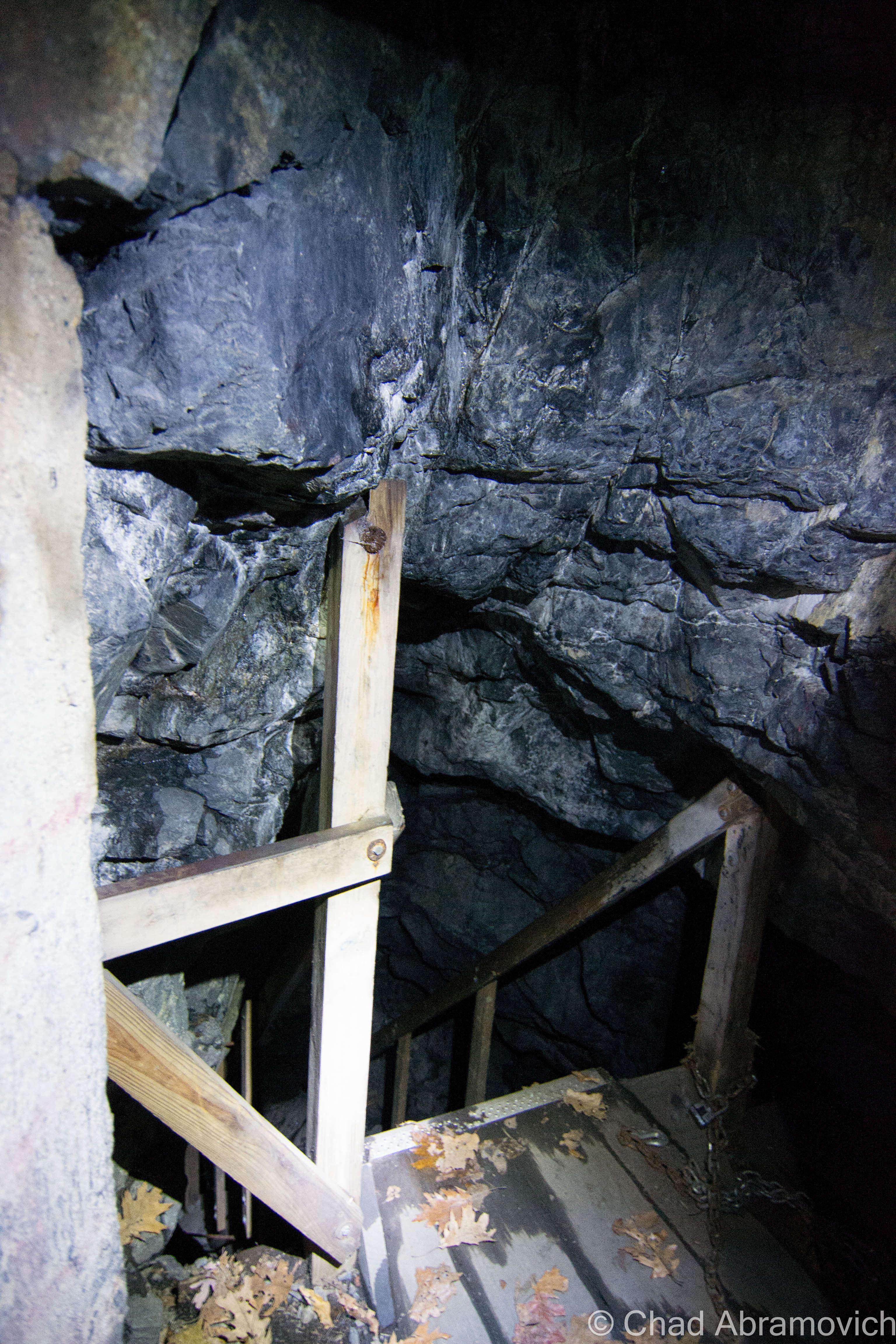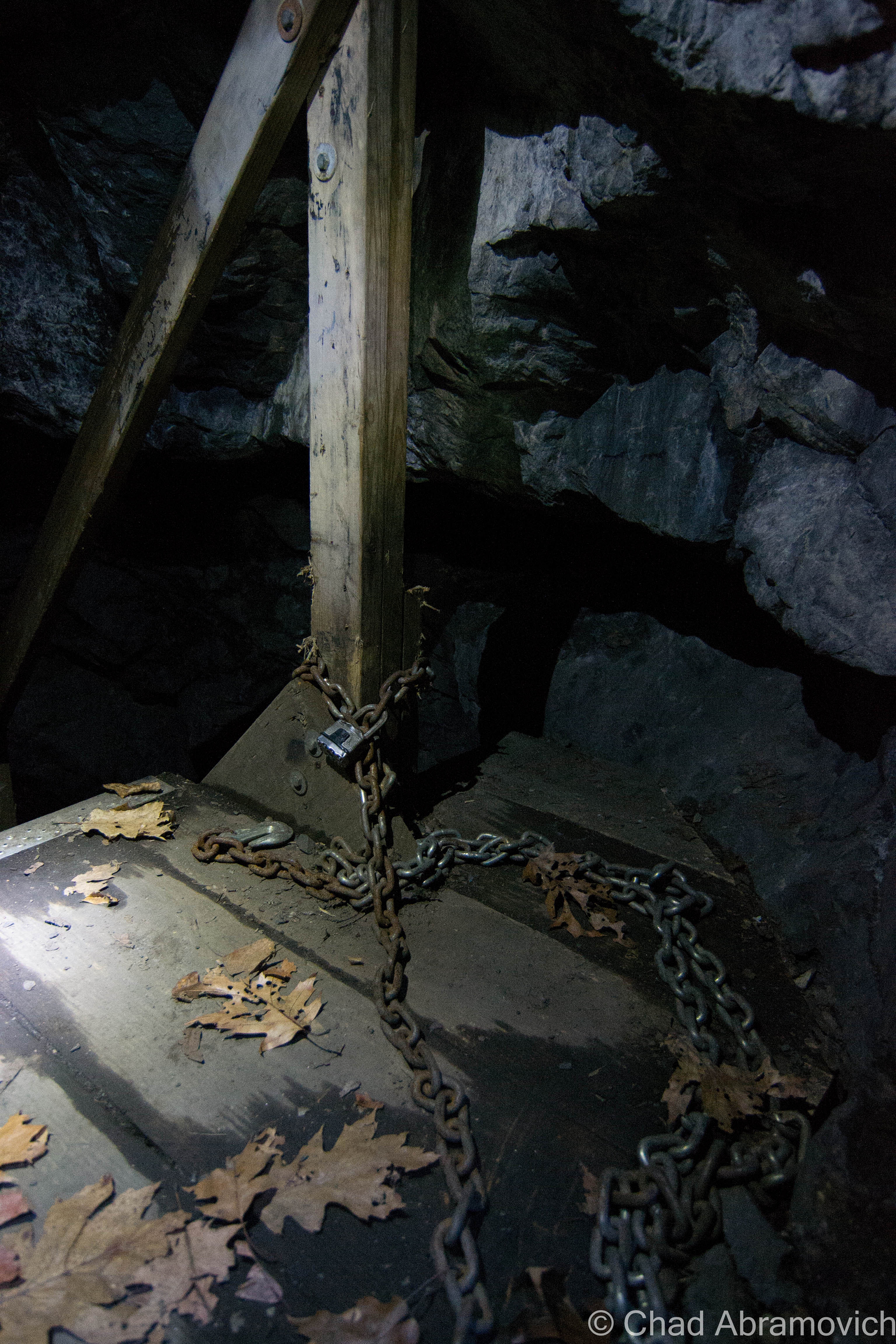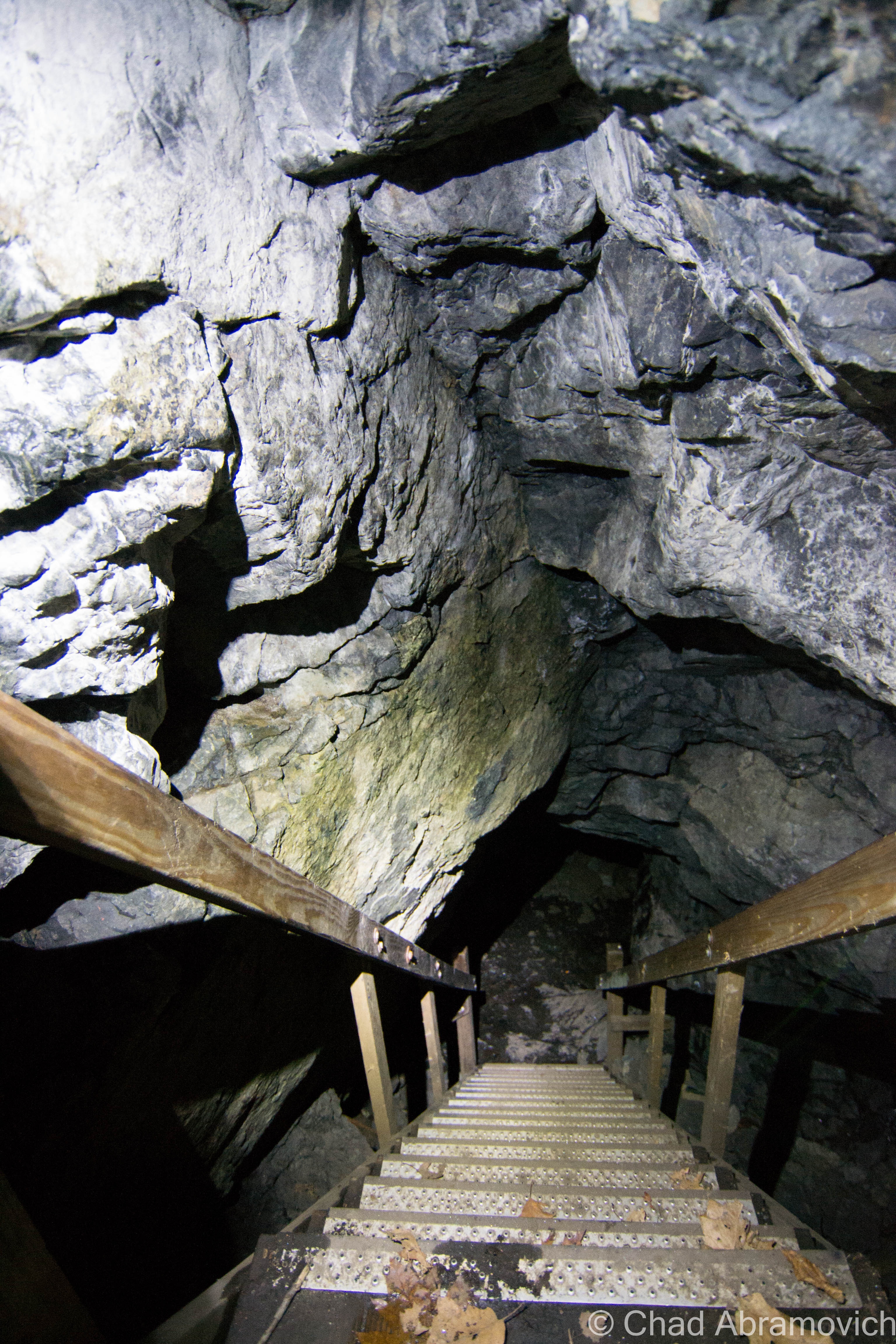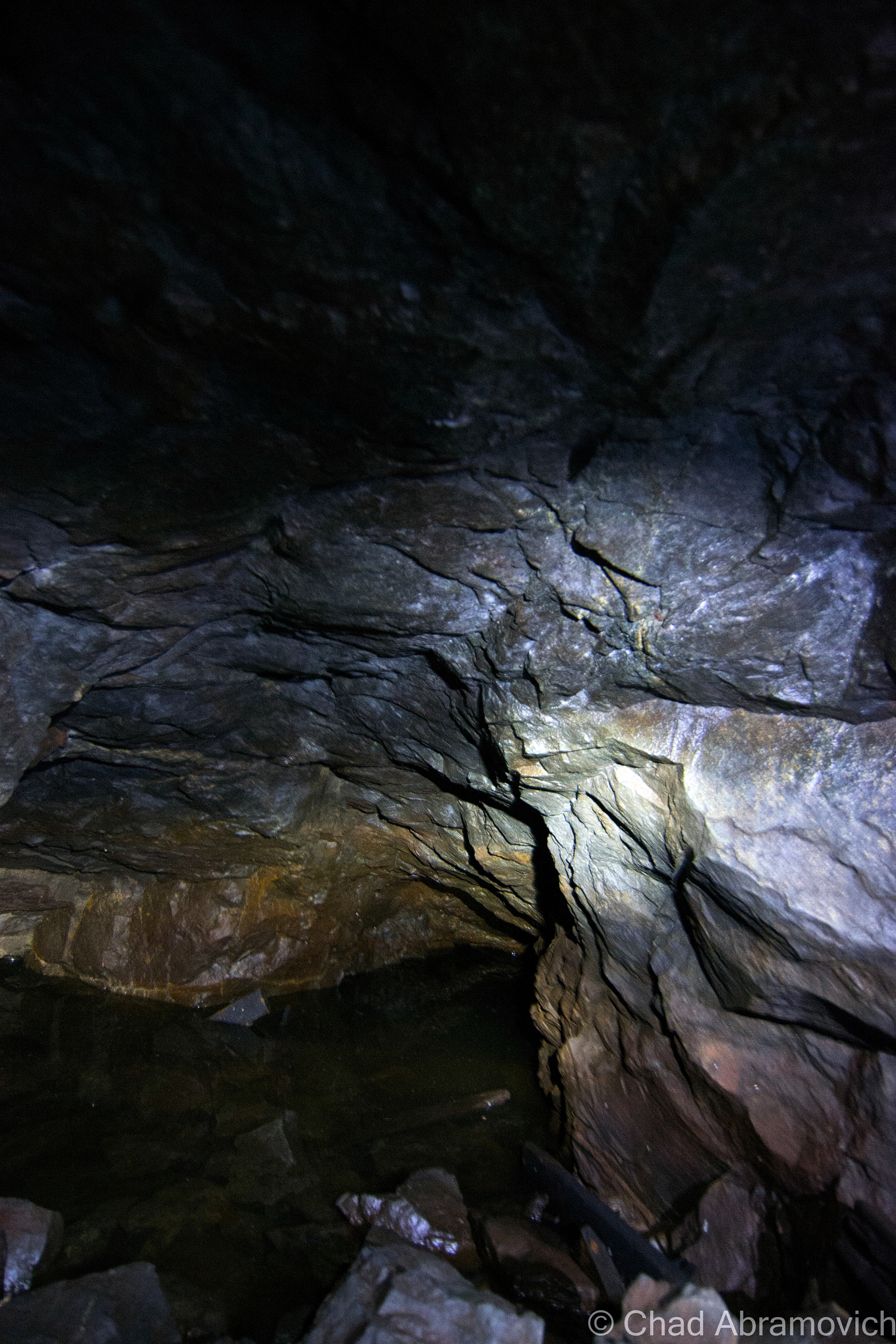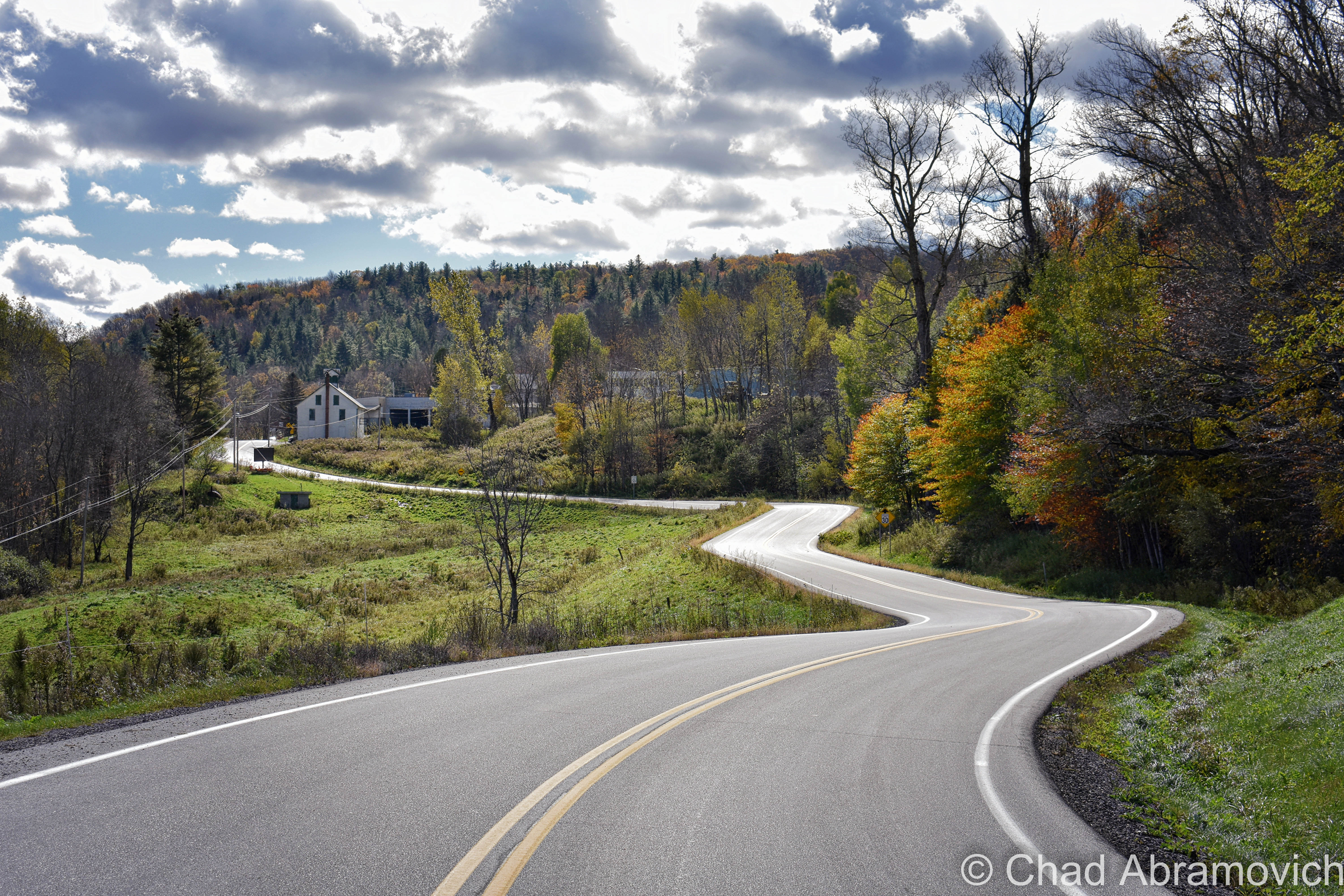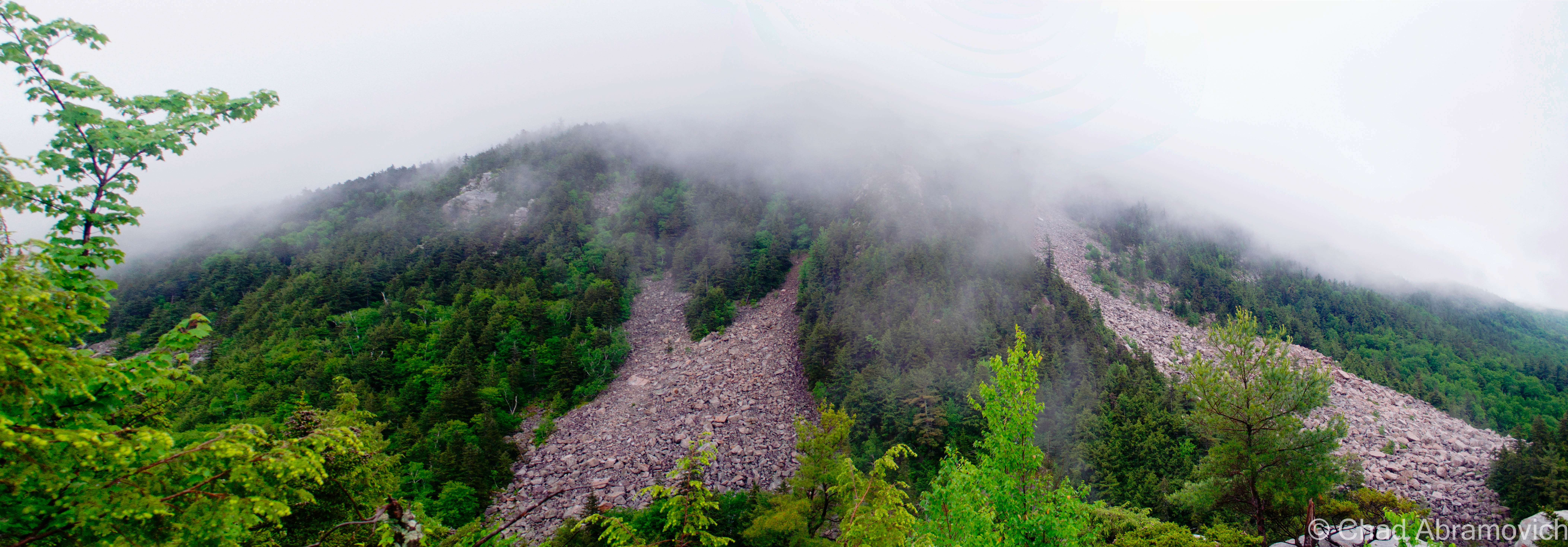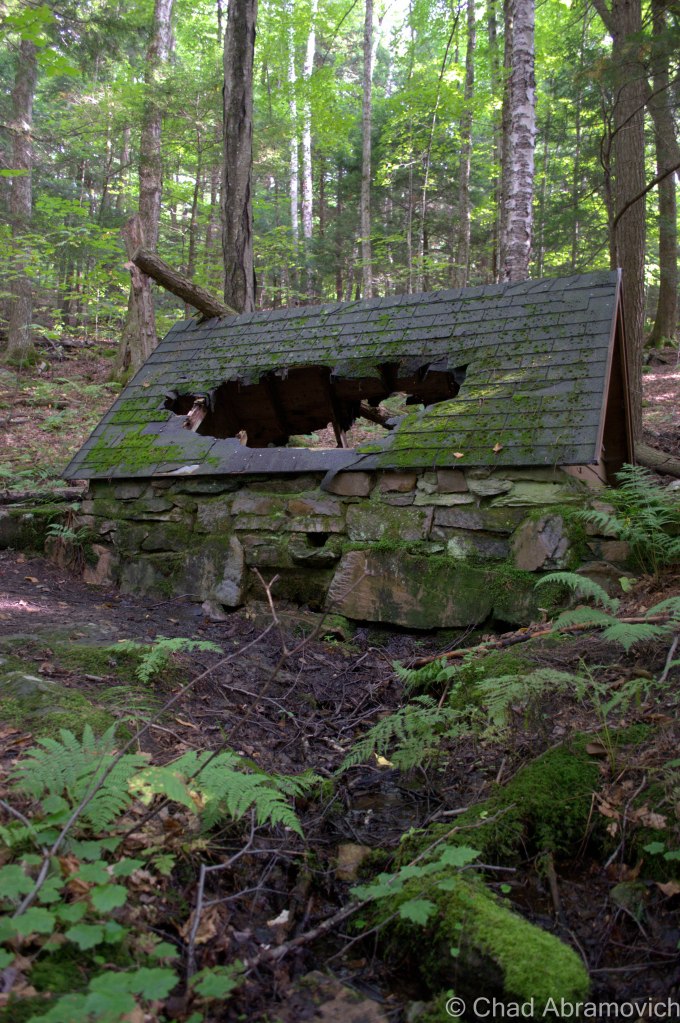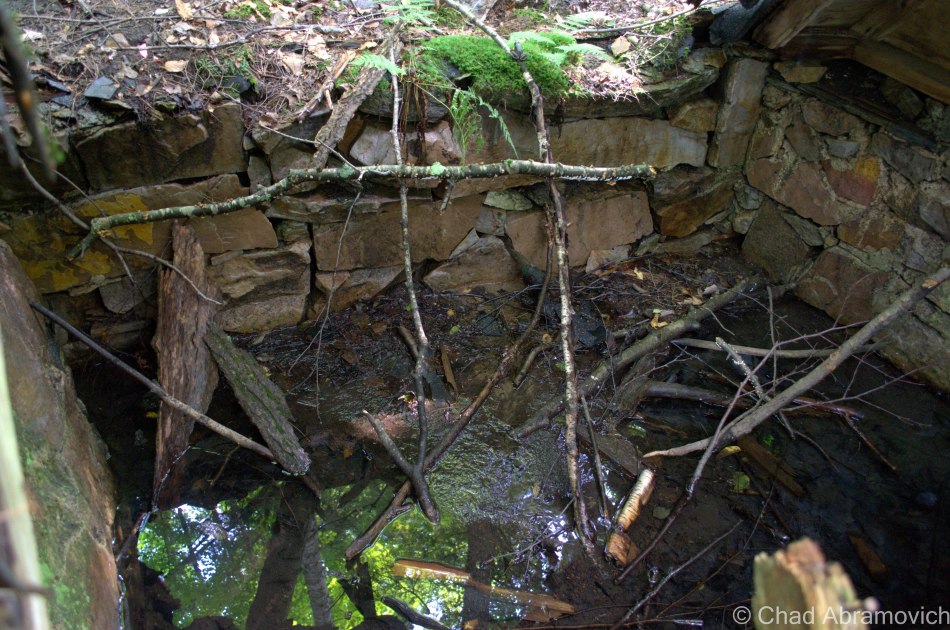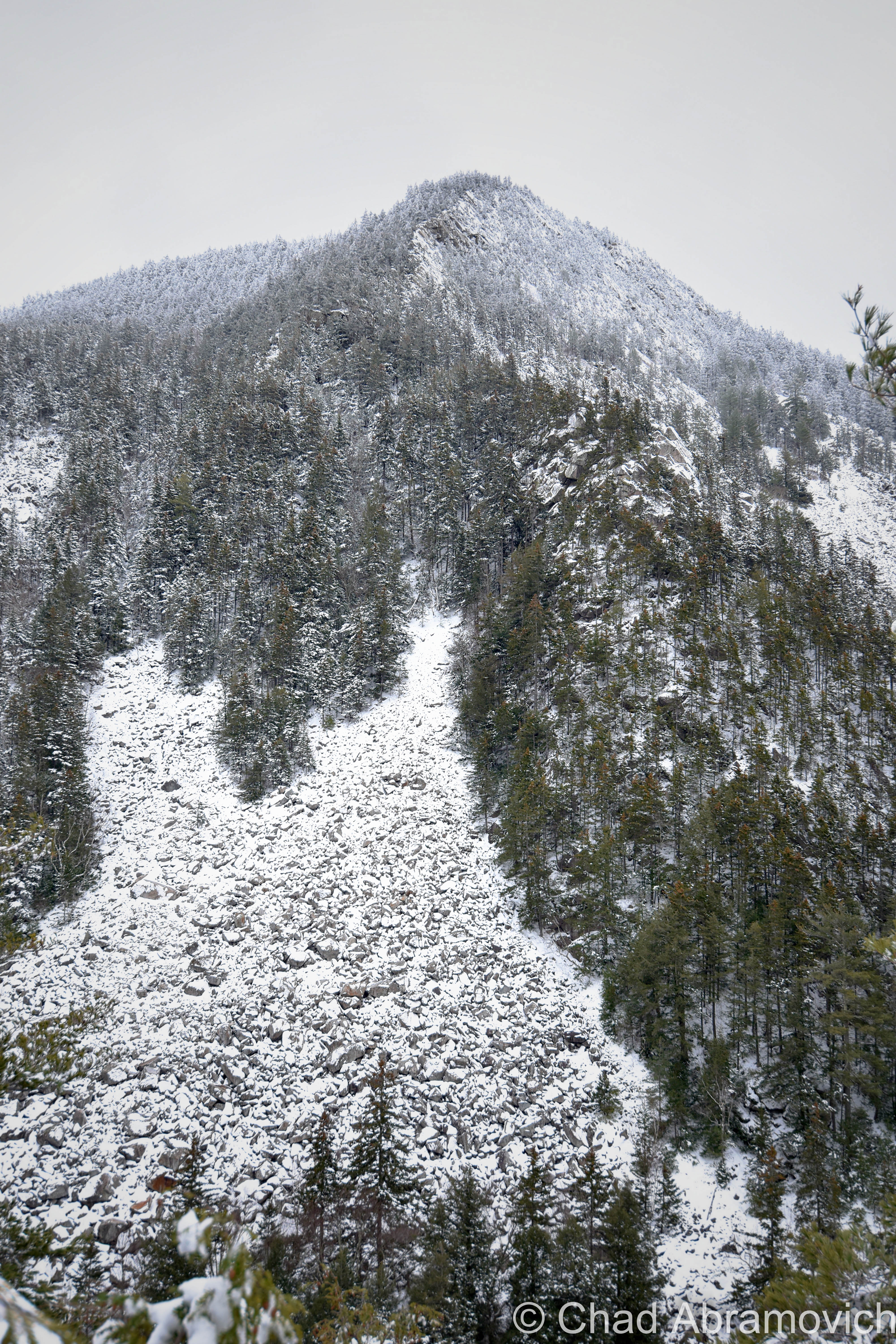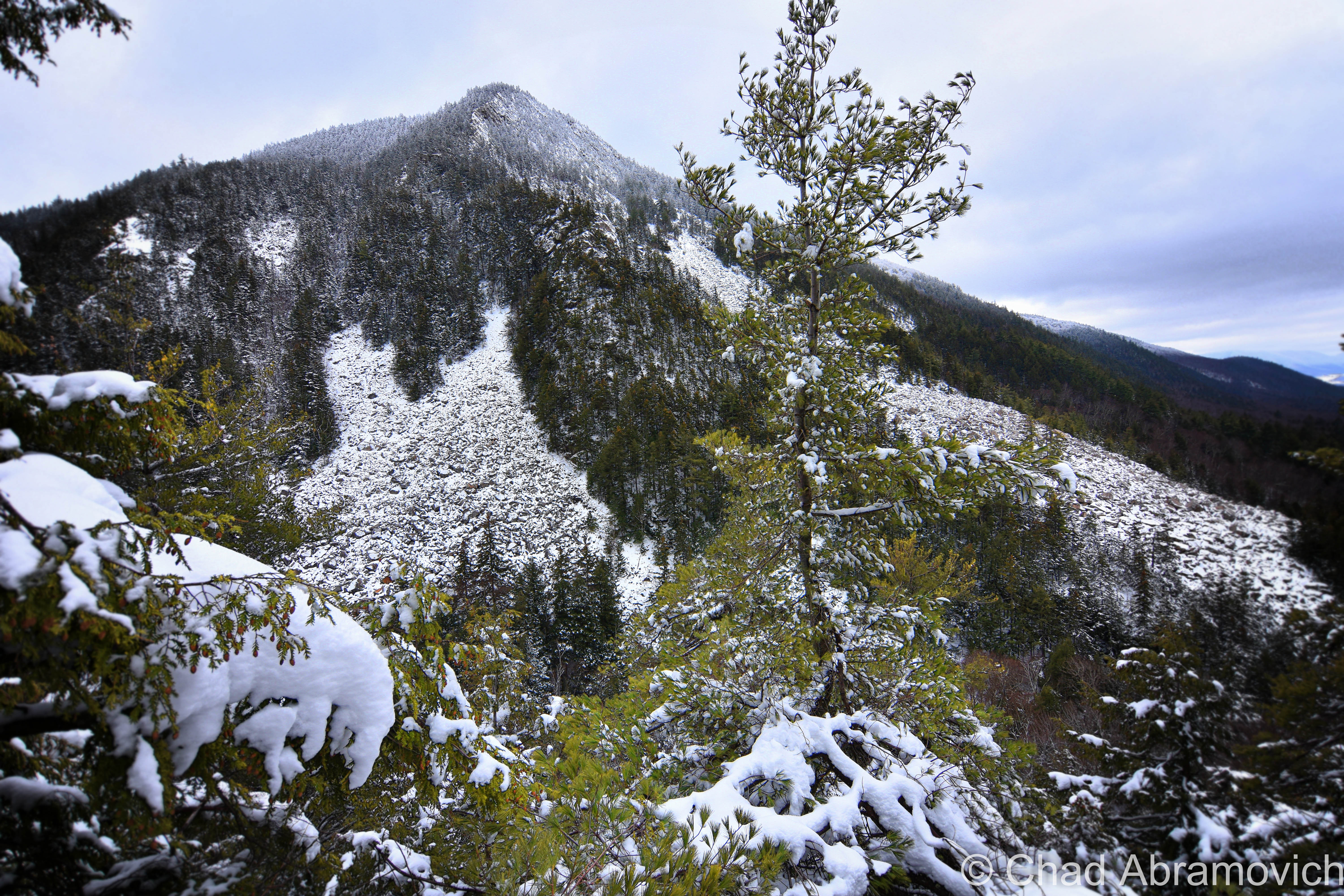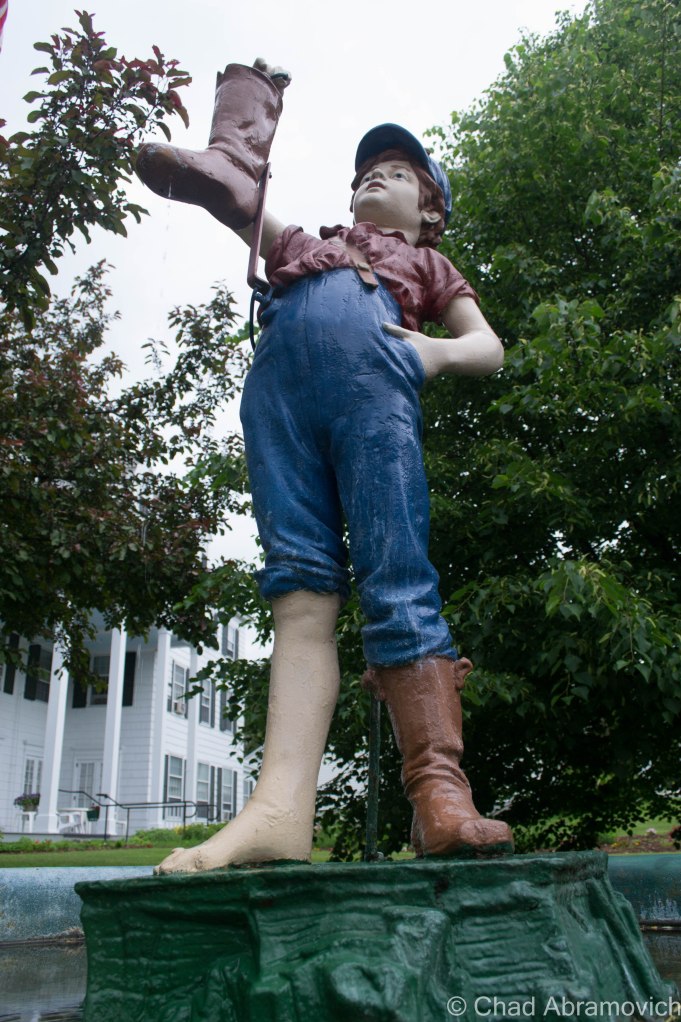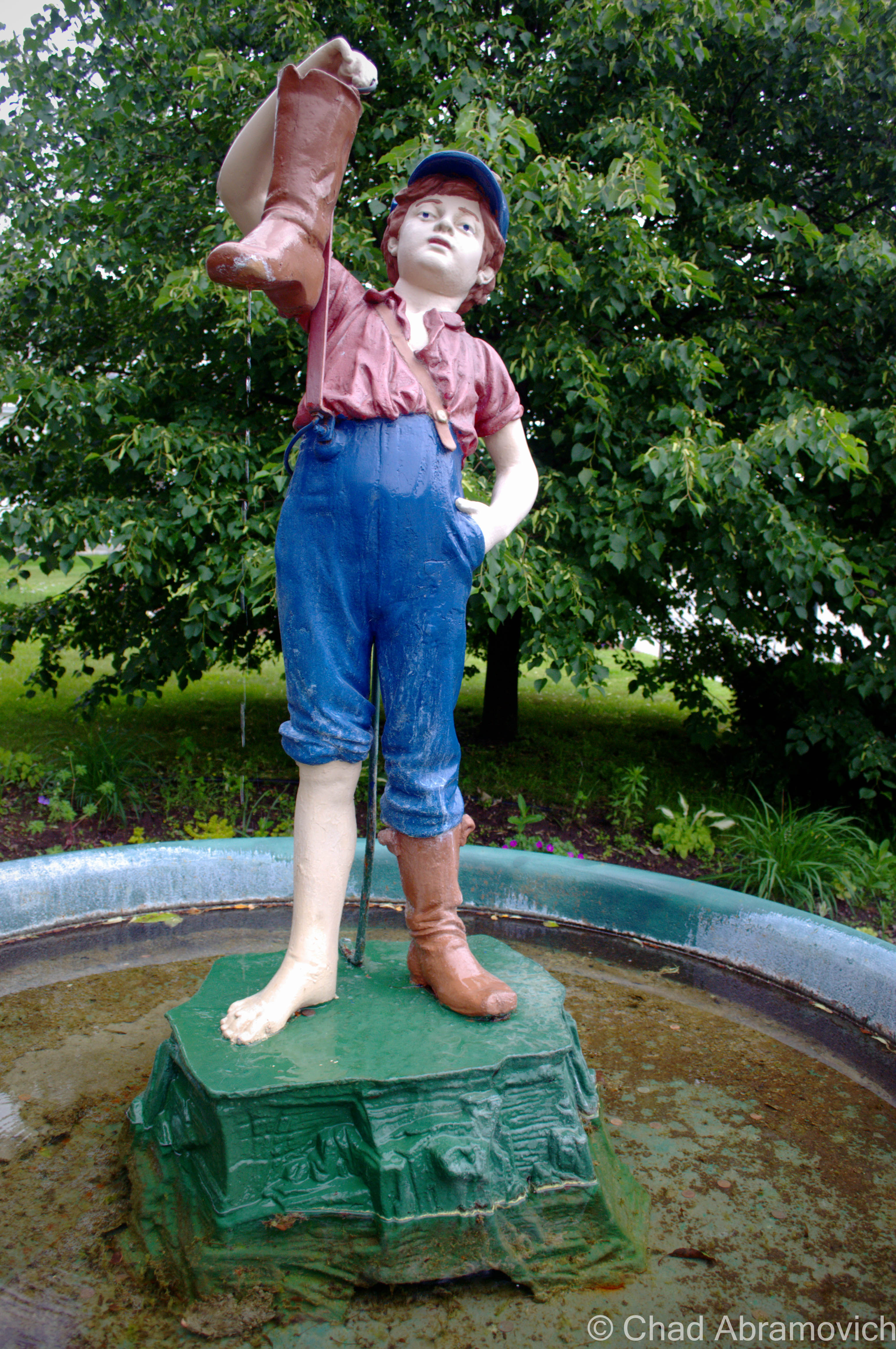The mystery isn’t in the technique, it’s in each of us. ~Harry Callahan.
The dark term dungeon isn’t a common moniker around New England, (unless you count Vermont’s arcane Popple Dungeon Road), so when I heard of a place in Lynn, Massachusetts called Dungeon Rock, of course, I was interested. Interested enough to take the 3-hour drive from Vermont to the fast-paced town of Lynn. In a large tract of woods concealing a landscape of boulderous terrain and large ponds with icy waters gently lapping at gravely beaches, lies an especially craggy boulder at the top of a steep rise of land. If you were to get a little closer and squeeze your way through some narrow crevices, you may notice an iron door set in the rock. Behind that door is a knee bending steep staircase that descends into blackness with dripping cold water, twisting passageways, and steep drops in elevation before eventually ending in solid rock and dank water, where the ceiling becomes so low that crouching becomes necessary.
You could probably speculate a lot of practical reasons why such a cave exists. But you’d probably be wrong. It seems that dungeon is a misnomer, it’s not a dungeon at all (but certainly takes on that appearance) It’s actually the product of a man looking for pirate treasure with instructions given by a ghost.
The story behind this interesting location starts in the early 1600s. It was here at Dungeon Rock where notorious pirate Thomas Veal is said to have buried a sizable treasure here, deep in a well-concealed cavern. Veal himself was hiding out in the wilderness of Lynn, the lone survivor of a band of pirates who were caught and returned back to England where they were hanged for their misdeeds. Veal took refuge in the same cave where he hid his ill-gotten treasure. But misfortune struck in 1658 when an earthquake hit New England and sealed up the cave forever, with Thomas Veal inside.
Shortly after, treasure seekers began trying to extract Veal’s treasure, picking and digging around the rock where they suspected the cave once was. But all efforts proved fruitless. It was lost within the Earth. It was around then when the rock earned its moniker, Dungeon Rock, maybe due to the fact that it was said that the sealed up cave with its dead pirate owner was much like a dungeon.
Interest in the cave stopped until 200 years later, during the craze of spiritualism. The story of Thomas Veal and his treasure attracted the attention of Hiram Marble from Charlton, Massachusetts. In 1852, he bought the property where Dungeon Rock sits, and sought out a spiritualist medium who contacted the ghost of the pirate and learned the precise whereabouts of the treasure.
He erected a house and a few outbuildings, and moved his wife and son there. Confident in the new found information and enthusiasm of finding a vast sum of wealth in the rocky New England soil, he saved a considerable fortune and began excavating operations. Day after day, he would chip at the unyielding stone, which then lead to using blasting powder and drills to dig deeper below the ground. Hiram would hold regular seances where he would have check-ins with Veal’s ghost, to direct the course of his mining. But despite all of his attention into his DIY project, he was only able to dig a single foot every 30 days. Then, in 1856, he ran out of money. But Hiram was committed to continuing his laborious plan.
Moving at such a gruelingly slow pace, with no funds, one might wonder what exactly kept him going? The regular contact of Thomas Veal was probably the culprit, because Hiram still had an astonishing amount of faith. But maybe his efforts were about to pay off? His seances were recorded – the dialogue between the two was written down. One such written account revealed that the pirate told Hiram he was close, just one more curve needed to be dug! But that curve would require at least 12 feet of digging, which would take another grueling year of backbreaking labor.
By 1864, they had managed to dig an astonishing 135 feet of twisting catacomb. Hiram’s son Edwin even joined in. And as luck would have it, his big dig was drawing attention far and wide. So Hiram decided to capitalize on his new found fame, and charge people admission for a tour of the man-made cave. With the admission funds, he continued to finance his project.

In November of 1864, after they had managed to borrow 200 feet of tunnel, Hiram died. Edwin followed his father to the grave in 1880, (and is buried beneath a Hemlock tree that grows right near the rock) leaving Hiram’s efforts as nothing more but a useless hole descending far below the ground of Lynn. The city eventually acquired the property in 1888. While some family members bequeath personal heirlooms to their loved ones or elaborate (and often vain) monuments that decorate a community, Hiram Marble left a giant hole that is tainted with sadness and intrigue.
Today, the cave is sealed off by an iron door that is open for a few hours each day in the warmer months, or upon special request by a park ranger, which is how I was able to get in on this particular blustery November day.
Dungeon rock can easily be missed. Though it’s one of the highest points around you, it looks like all of the other rock and boulder outcroppings scattered around the woods, and there are quite a lot.
Once you find the rock, you enter through a narrow crevice that leads to the door, which leads into a cold, wet and dark cave. The daylight immediately vanishes and leaves you having to turn on your flashlights and headlamps, which are necessities to explore the cave with – especially navigating the thin wooden steps leading down to the cavern floor that is so slick, it offers no traction. From there, this dank enclosed space twists and turns deeper below the earth, each corner a specific blueprint from a dead pirate. That’s something to ponder as you scramble around down in the dark. Eventually, the cave becomes too small to stand up in and dead ends abruptly in a pool of orange stagnant water. Once back outside, it’s not hard to see why Dungeon Rock is probably one of the strangest places in New England.
Maybe the lesson here is if you probably wouldn’t trust a pirate in the mortal world, why trust one in the afterlife?
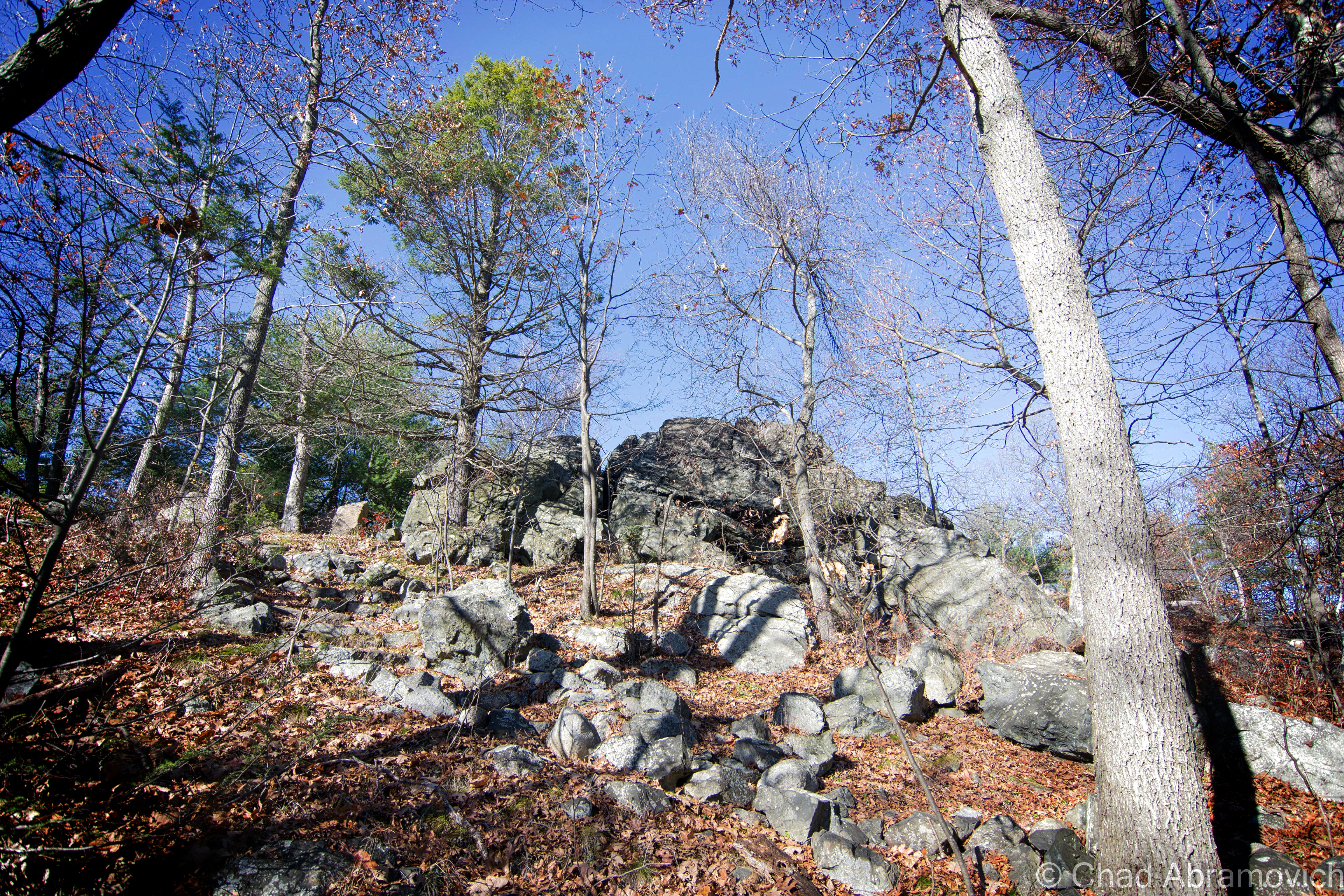
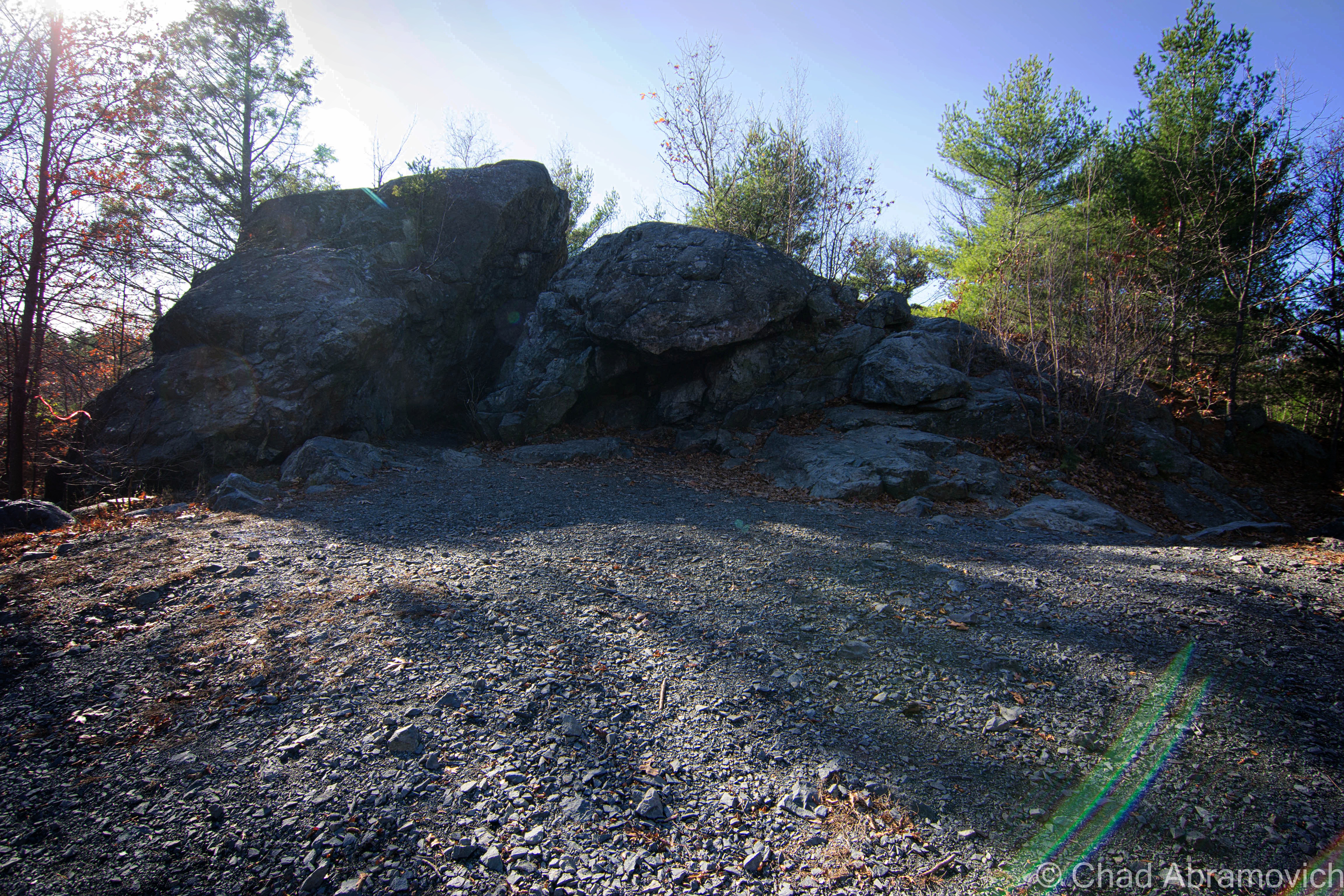
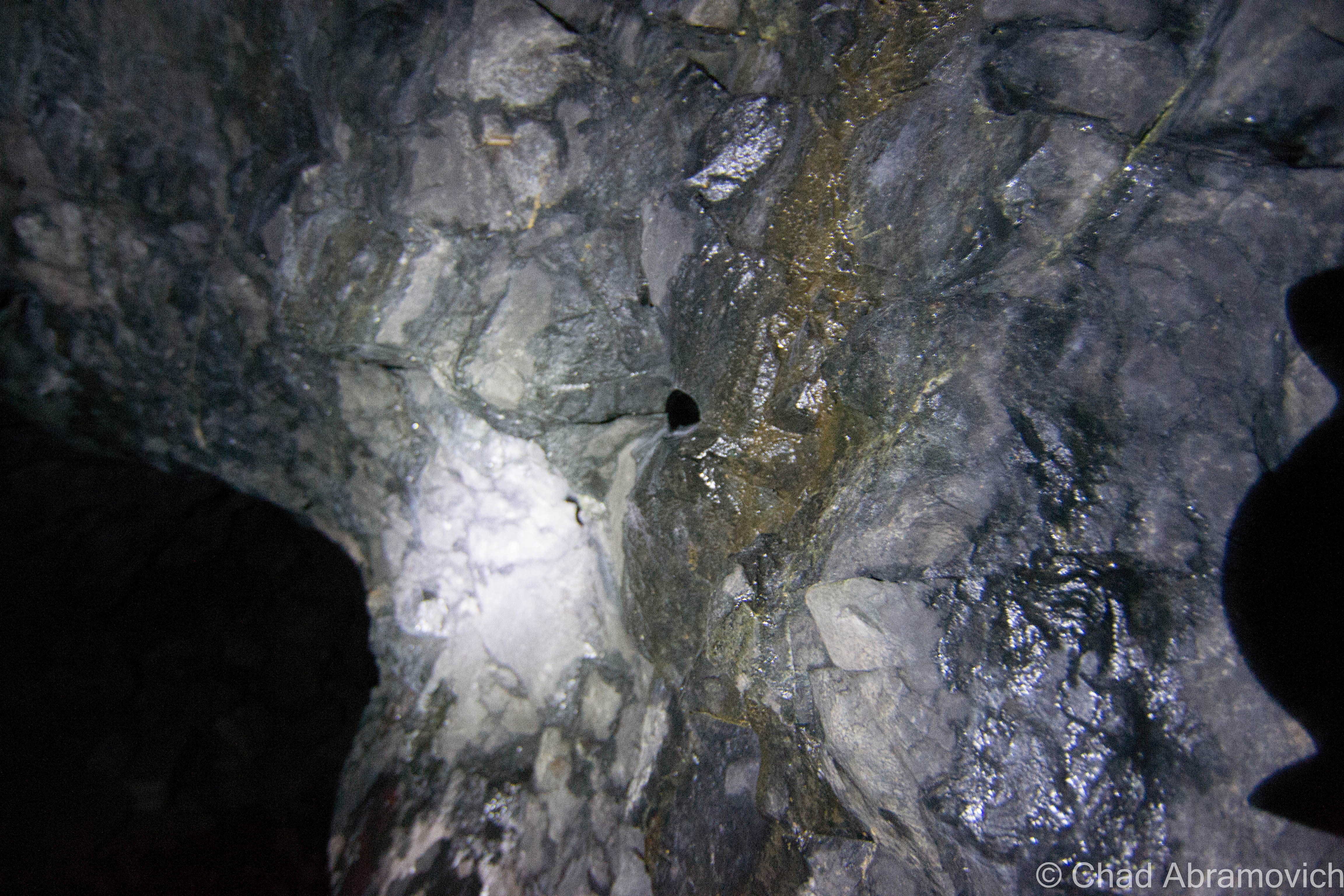
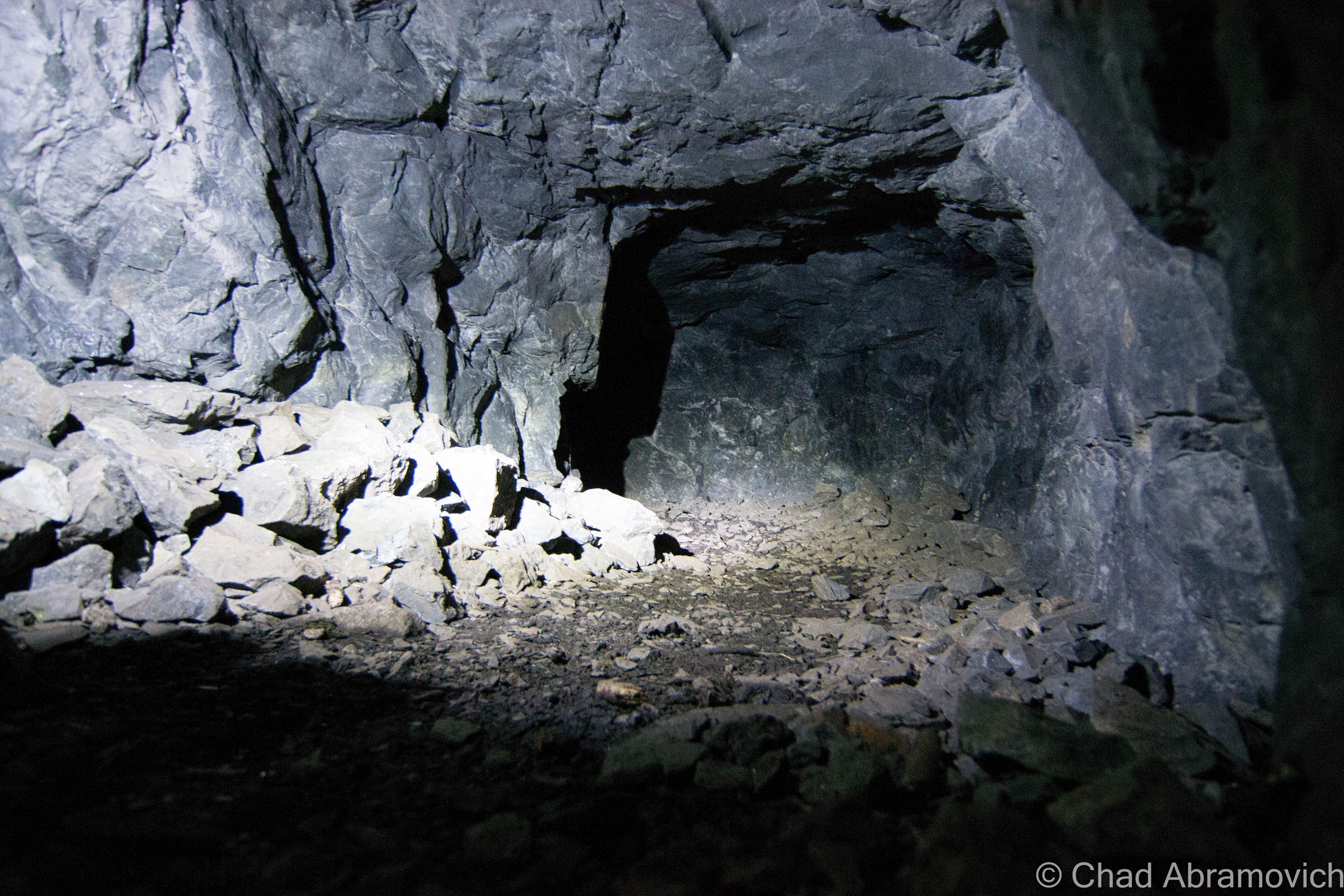
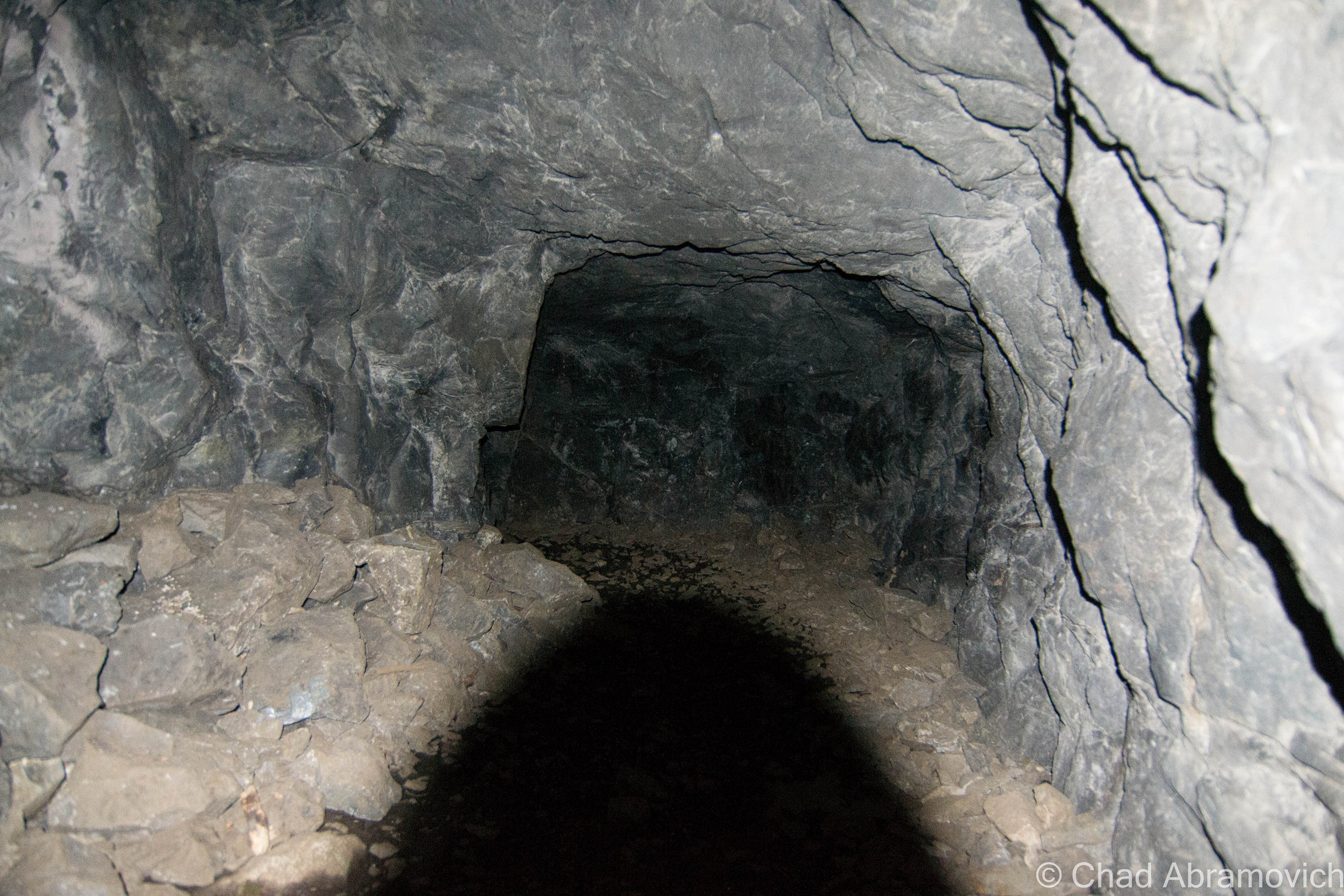
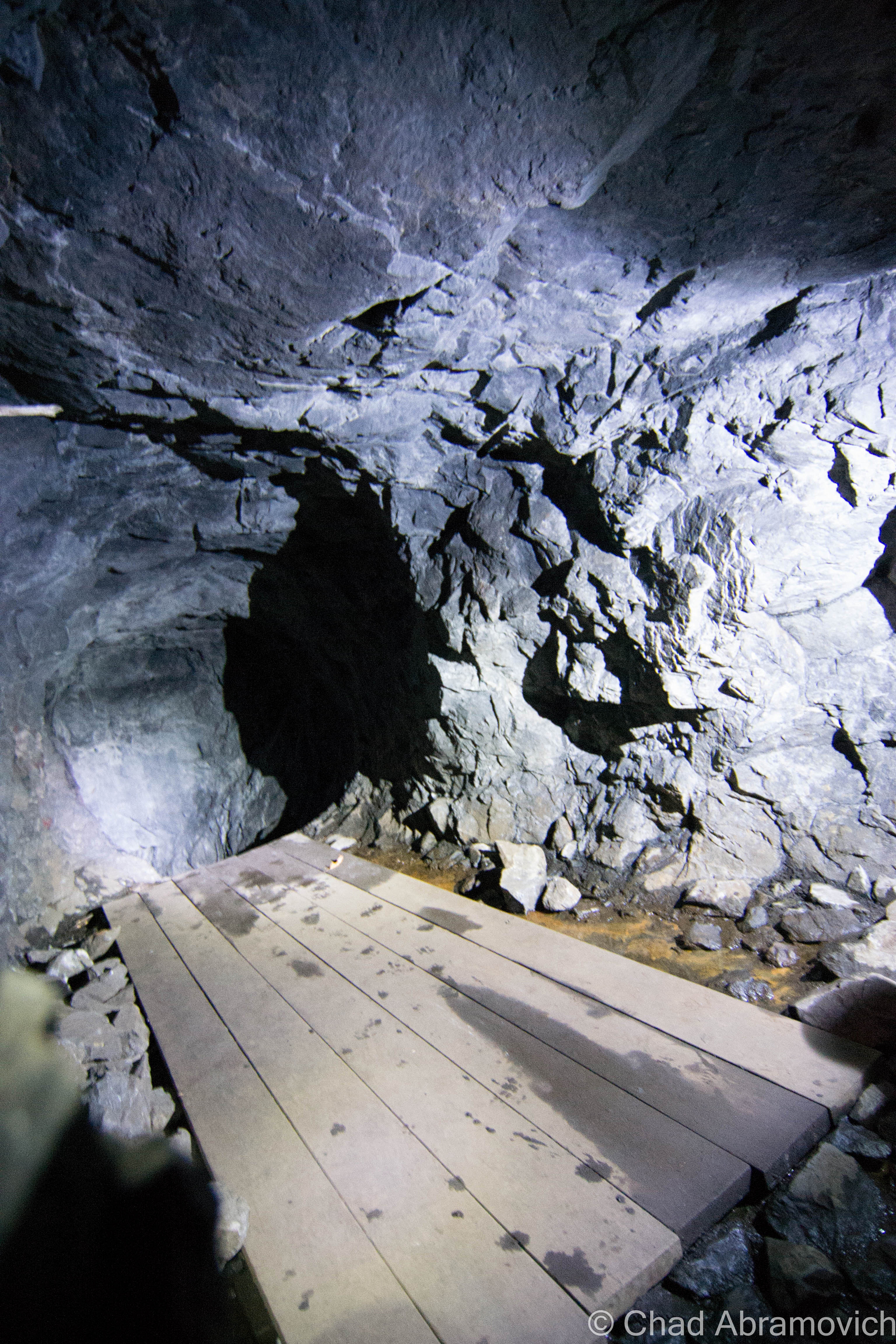
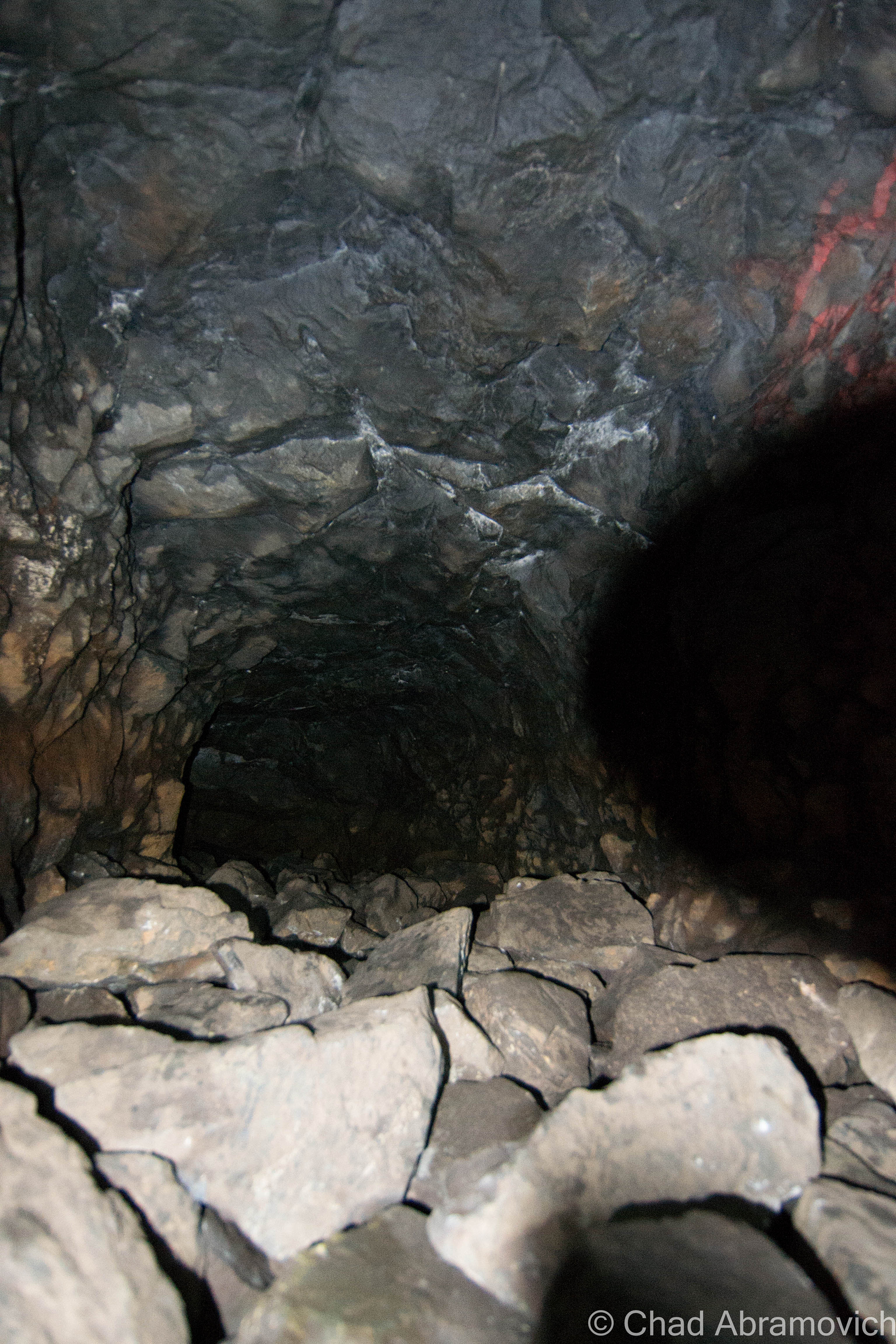
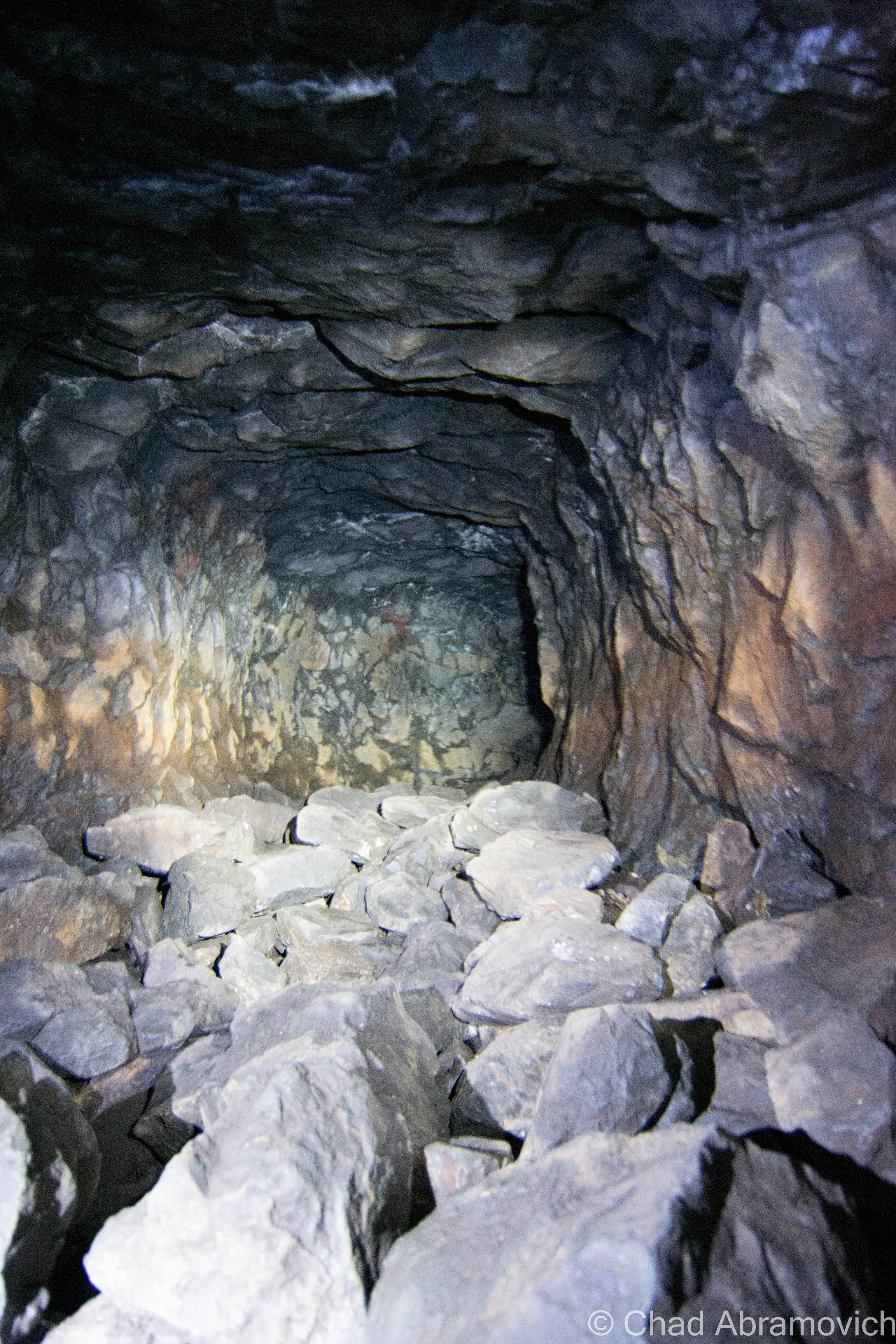
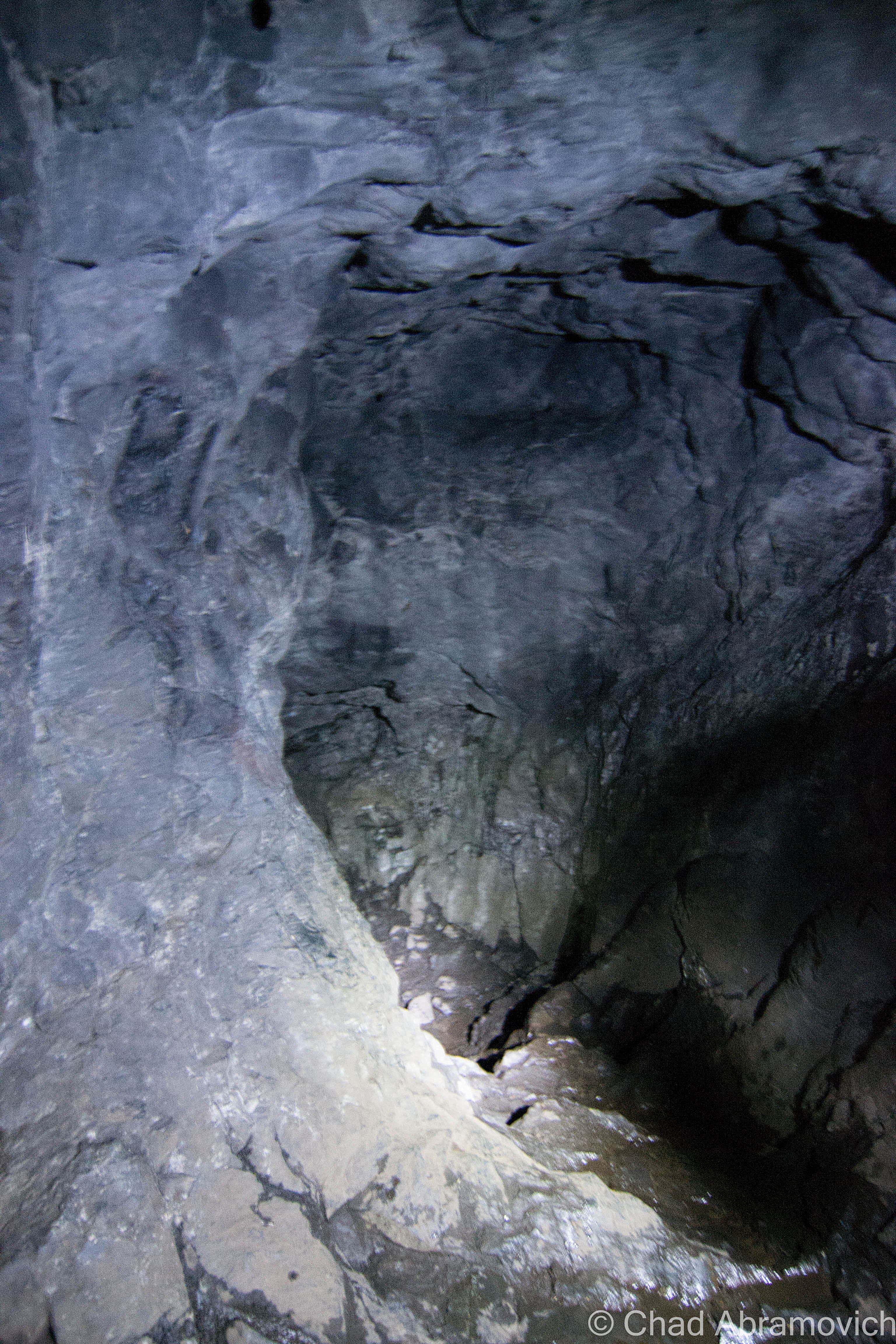
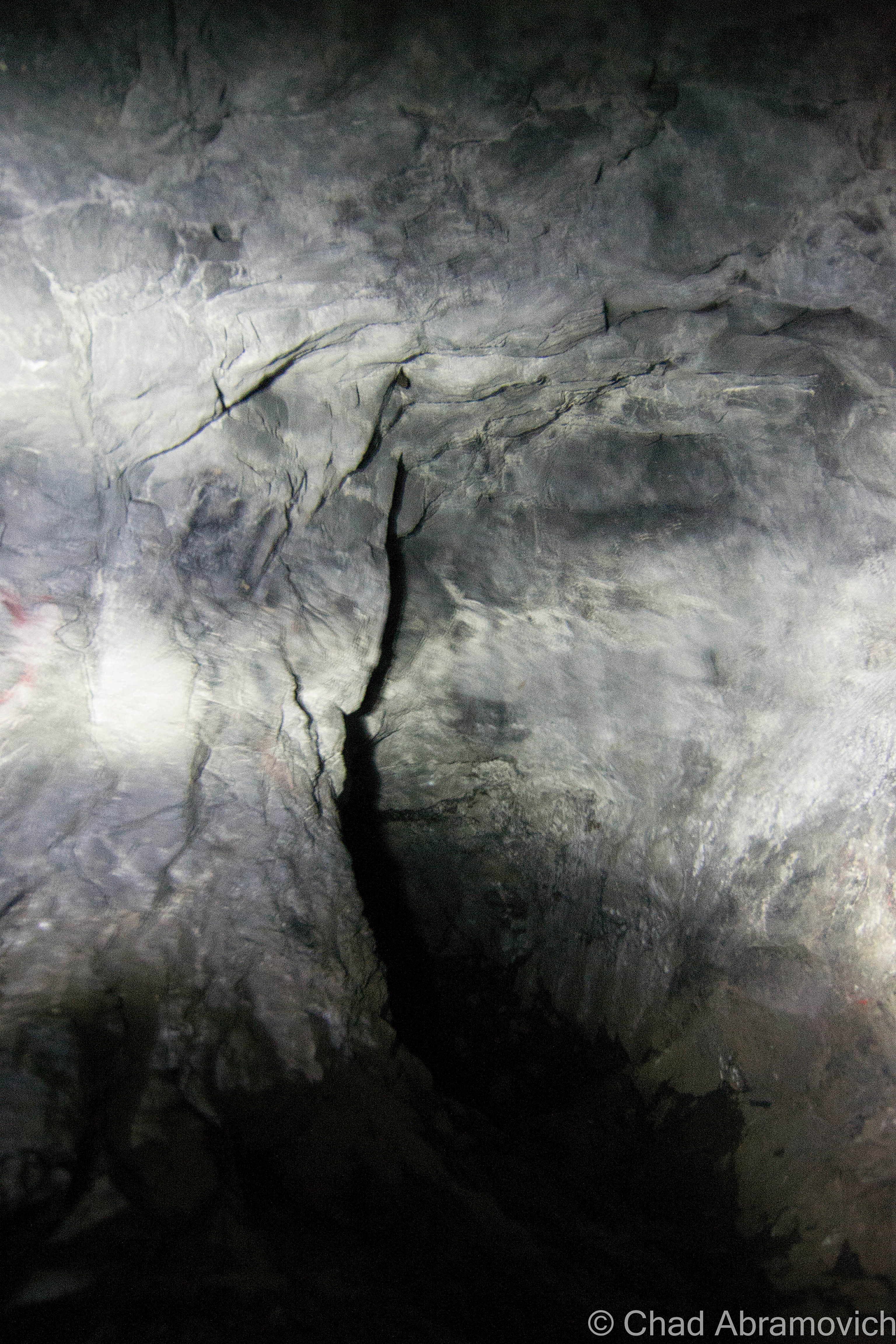
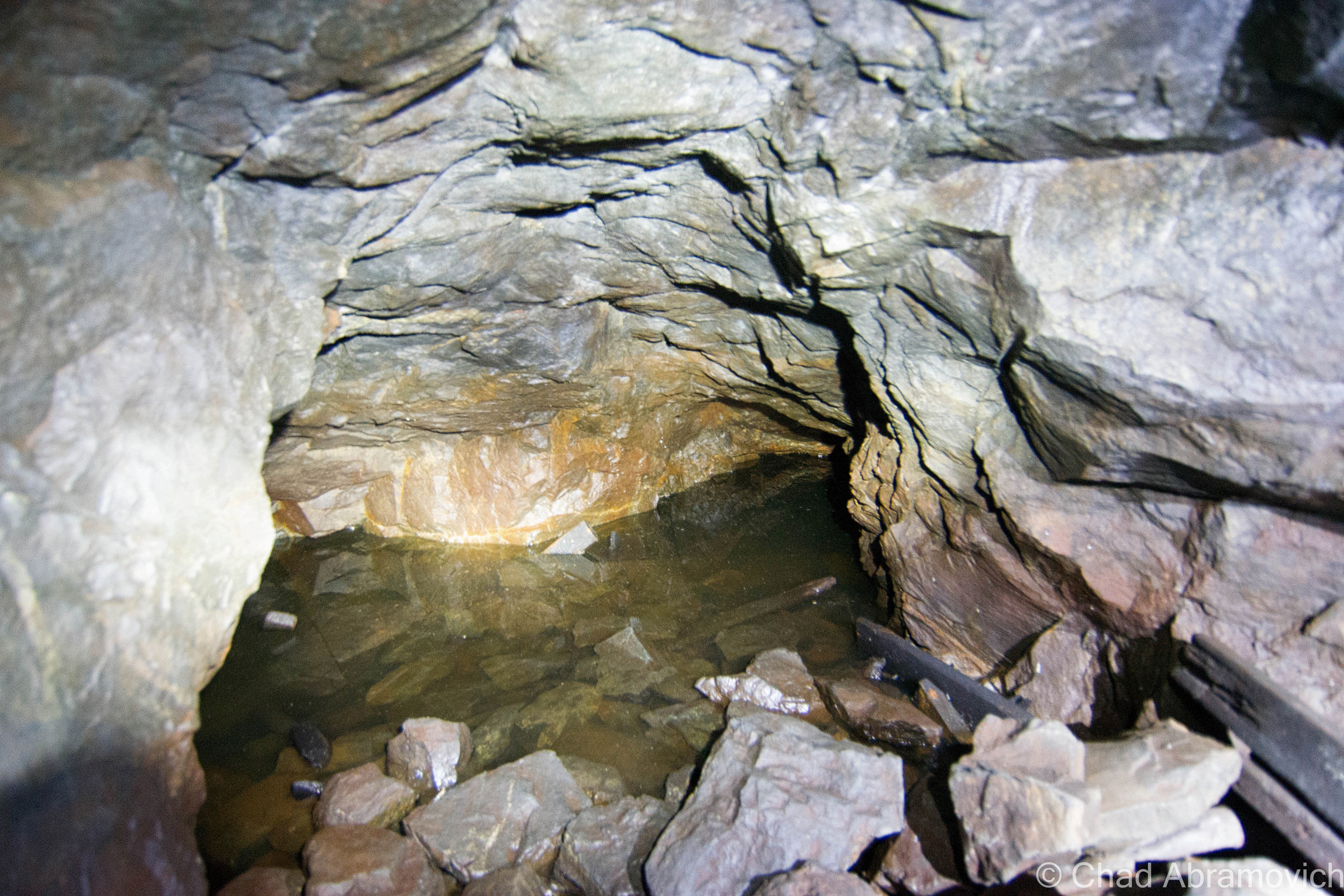
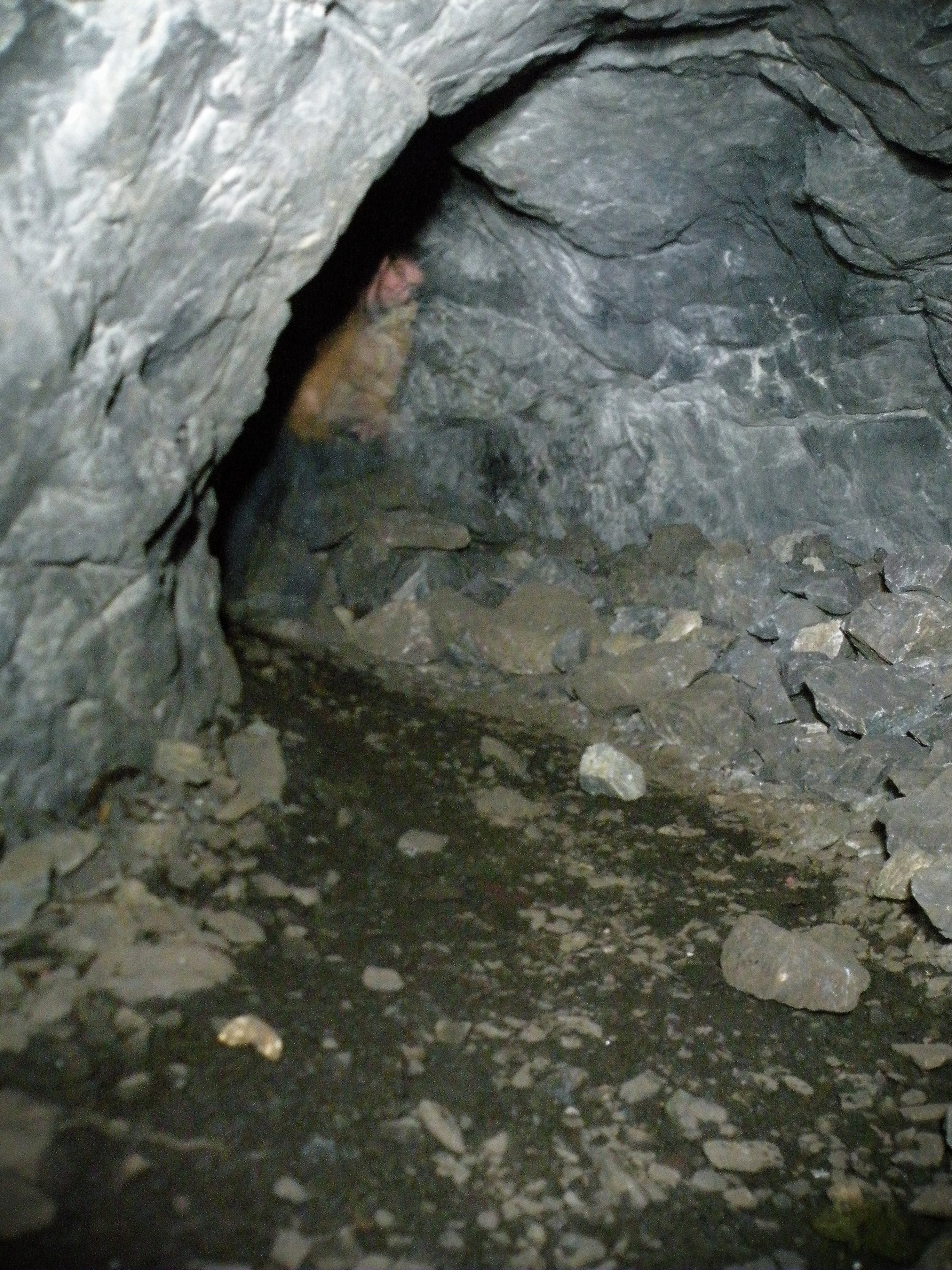
I guess at one point, someone made a fake pirate chest and turned it into a geocache in the cave, which may have disappointed a few explorers, but admittedly is still pretty cool. I didn’t come across it on my visit, however, or a real pirate chest for that matter.
Dungeon Rock is located in Lynn Woods, and can be found on their website
—————————————————————————————————————————————–
To all of my amazing fans and supporters, I am truly grateful and humbled by all of the support and donations through out the years that have kept Obscure Vermont up and running.
As you all know I spend countless hours researching, writing, and traveling to produce and sustain this blog. Obscure Vermont is funded entirely on generous donations that you the wonderful viewers and supporters have made. Expenses range from internet fees to host the blog, to investing in research materials, to traveling expenses. Also, donations help keep me current with my photography gear, computer, and computer software so that I can deliver the best quality possible.
If you value, appreciate, and enjoy reading about my adventures please consider making a donation to my new Gofundme account or Paypal. Any donation would not only be greatly appreciated and help keep this blog going, it would also keep me doing what I love. Thank you!
Gofundme: https://www.gofundme.com/b5jp97d4


